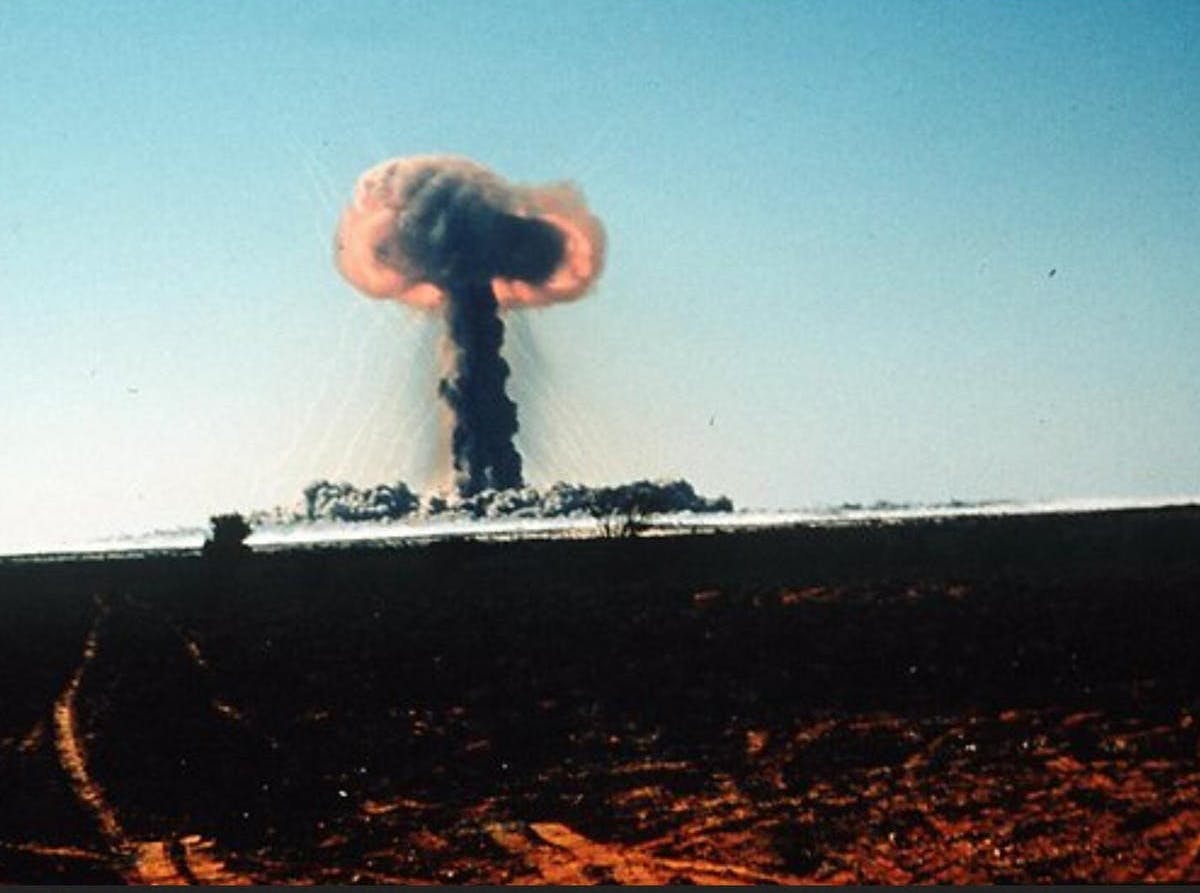‘A bomb in the basement’: The new push for a nuclear Australia

The Australian ruling class has long enthused about a nuclear-fuelled future. And as most of the rest of the world powers reduce their commitment to nuclear energy—Germany plans to shut down all of its nuclear plants by 2022, and only 16 percent of countries today have operational nuclear reactors—the Australian government wants to power up.
Australian governments have been nuclear supporters since the technology first emerged in the 1940s. The country had scientists involved in bomb research in the US during World War Two. During and after the war, in the wake of the horrors of Hiroshima and Nagasaki, it readily responded to UK and US requests for uranium, primarily for nuclear weaponry.
In his book Australia’s Bid for the Atomic Bomb, Wayne Reynolds spells out in detail the nuclear ambitions of wartime Labor Prime Minister John Curtin, his successor Ben Chifley and Liberal Party Prime Minister of the 1950s and ’60s Robert Menzies. He writes that many major projects of the postwar years, such as the Snowy Mountains scheme, were undertaken with a view to Australia becoming a nuclear state.
In 1952 the Australian Atomic Energy Commission was established to develop and train a cohort of researchers and workers to support a future nuclear industry. Defence and security planning also foresaw a central role for nuclear—the Australian air force, for example, purchased F-111 fighter jets precisely because of their nuclear weapons capability. The vision was not of an Australian state armed with nuclear weapons for defence, but one that could use such weapons to enhance its position as a regional imperialist power.
The main thing that has prevented the development of a nuclear industry in Australia is the anti-nuclear campaign and strong opposition from unions in the 1970s and ’80s. This campaign pushed state and federal governments to implement a moratorium on nuclear energy that has held ever since.
In recent years, however, there have been growing calls for the question to be revisited. Today’s nuclear proponents have a fresh angle for their propaganda campaign: a newly discovered concern about climate change. Though the Australian government refuses to commit to zero-carbon goals and pours billions into coal and gas, the need for improved sustainability is suddenly front and centre when it comes to arguments for nuclear power.
The government hasn’t wasted time in attempting to leverage nuclear energy’s supposed green credentials to shift public sentiment and open the door to overturning the moratorium. In August 2019 Energy Minister Angus Taylor set up a parliamentary inquiry—led by the Standing Committee on Energy and Environment—into “the prerequisites for nuclear energy in Australia”.
The result was a foregone conclusion because the Liberals hold four out of seven seats on the committee, although its two Labor members and the independent Zali Steggall wrote dissenting reports. “The Australian government”, the inquiry found, “should further consider the prospect of nuclear technology as part of its future energy mix”, and “consider lifting the current moratorium on nuclear energy ... for new and emerging nuclear technologies”.
Recent reports suggest the government may be preparing to make good on these recommendations. “Morrison ministers lay groundwork for nuclear energy election plan”, read the headline of a 22 June article by Australian national editor Dennis Shanahan. According to Shanahan, “The option of taking a proposal for nuclear power in Australia to the next election has been considered in cabinet-level discussions as pressure grows within the Morrison government to prepare for a nuclear energy industry”.
“The top-level political and policy discussions including Liberal and Nationals ministers involved the argument that the moratorium on nuclear energy could be lifted in the decades ahead to cut greenhouse gas emissions and replace reliance on fossil fuels.”
Plans for a nuclear-fuelled Australia must be opposed. Nuclear is the “fool’s gold” solution to the climate crisis. As environmental scientist Mark Diesendorf says, “On top of the perennial challenges of global poverty and injustice, the two biggest threats facing human civilisation in the 21st century are climate change and nuclear war. It would be absurd to respond to one by increasing the risks of the other. Yet that is what nuclear power does”.
The case for nuclear can also be countered with cold, hard economics. Nuclear energy is much more expensive than the many low or zero-emissions alternatives. International financial advisory firm Lazard’s 2020 Levelized Cost of Energy Analysis found that the cost of new nuclear works out to US$129-198 per megawatt hour. By comparison, it estimated the cost of utility scale solar at US$29-42 and wind power at US$26-54. Nuclear energy has never stacked up economically. In the 50-year history of the industry, it has always relied on massive government subsidies.
The real motivation for the push for nuclear energy in Australia remains the same as it was in the 1950s and ’60s: the potential to develop nuclear weapons. The government, of course, isn’t prepared to say the quiet part out loud. Others, however, have no such qualms.
In an article published in the Financial Review in April, Patrick Porter—a professor of international security and strategy at the University of Birmingham—said what many in the Australian military and political establishment are no doubt thinking. In the context of growing instability in the region and the possibility of a war between the US and China, Australia should at least “create the option” to build its own nuclear arsenal, becoming “a latent nuclear state, with a so-called ‘bomb in the basement’: the ability to swiftly generate a deployable atomic arsenal if the world turns more threatening”.
A nuclear-armed Australia would be a disaster for workers here and around the world. It’s time to recapture the spirit of the anti-nuclear campaign of the 1970s and ’80s. And once again, if we’re to win we’ll need workers and unions at the forefront. Recent statements opposing the nuclear industry by the Electrical Trades Union and the Victorian branch of the CFMEU provide an example that other unions should follow.